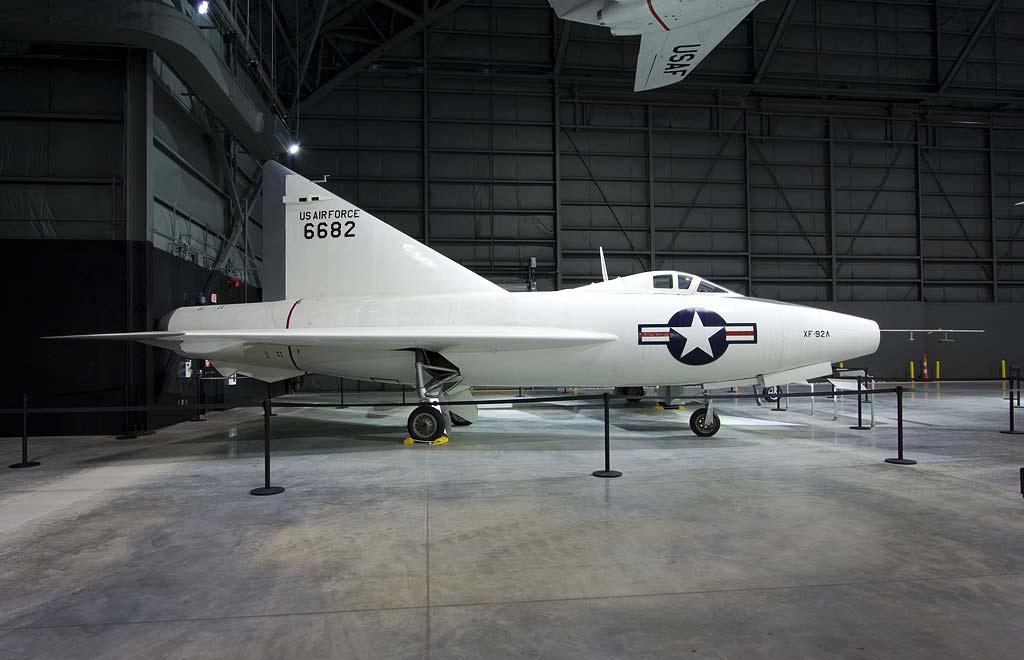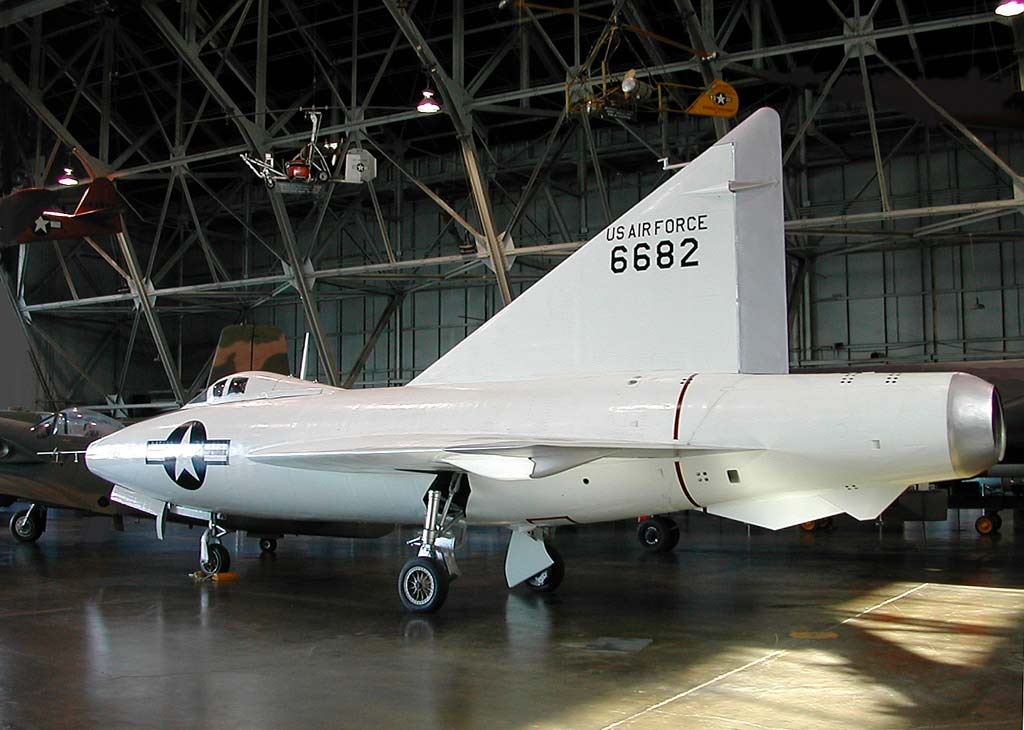The Convair XF-92, an experimental delta-wing interceptor, was a pioneering design in U.S. jet aircraft development with notable maneuverability.
The Convair XF-92 represented a significant milestone in the evolution of jet aircraft, being the first American delta-wing aircraft. It was an experimental platform that laid the groundwork for future fighter and interceptor designs. The XF-92 was developed during a time of rapid advancement in aviation technology, particularly in the realm of jet propulsion and aerodynamics. It was a forerunner in exploring the potential of delta-wing configurations in high-speed flight.

History of the Development of the Convair XF-92
The period following World War II was marked by a technological race to develop advanced jet-powered aircraft. The United States, recognizing the strategic need for superior air defense capabilities, initiated the development of the XF-92 to explore the potential of delta-wing designs in achieving higher speeds and better maneuverability.
The project was launched by Convair (Consolidated Vultee Aircraft Corporation) in the late 1940s. The primary objective was to create an interceptor aircraft that could provide effective air defense against potential threats, especially in the emerging Cold War context.
The XF-92 made its maiden flight on September 18, 1948. This flight represented a significant leap in aerodynamic design, moving away from traditional straight-wing layouts to a more radical delta-wing configuration.
The XF-92 did not receive a NATO nickname as it was developed before NATO’s standardization of aircraft names and was not an operational aircraft.
Design of the Convair XF-92
The Convair XF-92 was groundbreaking in its design, primarily due to its delta-wing configuration. This wing design, characterized by a triangular shape, was chosen for its potential to improve aircraft performance at high speeds and altitudes.
The aircraft measured 42 feet 6 inches (12.95 meters) in length, with a wingspan of 31 feet 4 inches (9.55 meters). The delta wing provided a large surface area, contributing to increased lift and stability at high speeds.
One of the drawbacks of the XF-92 was its limited range and endurance, a consequence of its high fuel consumption. Additionally, the initial lack of power from its Allison J33-A-21 turbojet engine, which produced 5,000 lbs of thrust, was a limitation.
Performance of the Convair XF-92
In terms of performance, the XF-92 was a step forward in exploring the capabilities of jet-powered flight. It reached a top speed of approximately 715 mph (1,150 km/h), demonstrating the potential of the delta-wing design for high-speed flight.
The aircraft’s maneuverability and rate of climb were impressive, but it did face limitations in terms of range and operational endurance. Compared to contemporary aircraft, the XF-92 was more of a technology demonstrator than a frontline fighter, but its design influenced later aircraft such as the Convair F-102 Delta Dagger and F-106 Delta Dart.

Military Use and Combat of the Convair XF-92
The XF-92 was not used in military operations or combat, as it was primarily an experimental aircraft. It was designed to test the feasibility and performance characteristics of delta-wing aircraft, rather than as a deployable military platform.
The XF-92 did not carry armaments in its test flights, and there were no plans to equip it with weapons due to its experimental nature. It served as a testbed for research and development, contributing valuable data that influenced the design of subsequent delta-wing aircraft.
The XF-92 was not sold to other countries or used in any conflict. Its role was strictly limited to research and development within the United States. The insights gained from its flights were instrumental in the development of future interceptor aircraft.
The Convair XF-92 played a pivotal role in the history of jet aviation, marking a significant departure from traditional aircraft designs with its innovative delta wing. While it never entered military service, its contributions to aerodynamic research and jet aircraft development were profound, influencing the design of several key aircraft in the Cold War era. The XF-92 remains a landmark in aviation history, representing a bold step into the uncharted territory of high-speed jet flight.
Back to the experimental aircraft section.